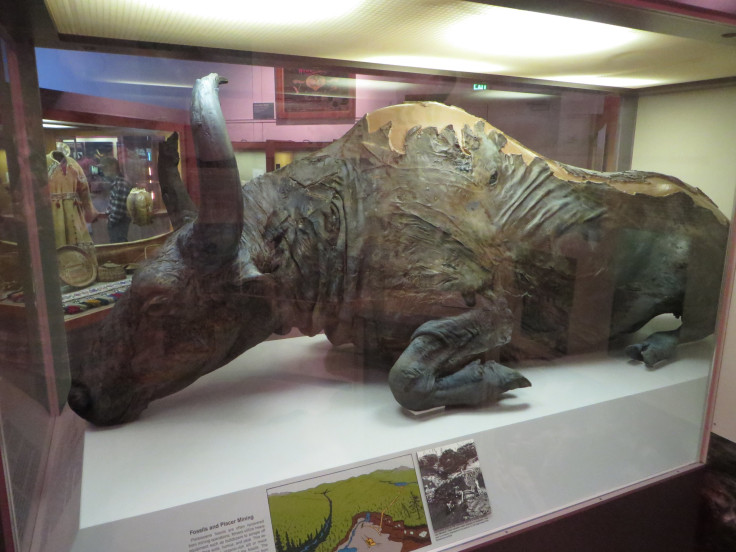9,300-Year-Old Bison Mummy Found In Siberia Sheds Light On Ice Age Beast [PHOTO]

The withered but well-preserved carcass of an Ice Age steppe bison has been uncovered in the frozen lowlands of Siberia after being entombed in ice for nearly 10,000 years. The bison mummy, one of the most complete frozen mummies ever found, still has a full coat of fur and several major organs, including its brain, heart, blood vessels and digestive system, according to researchers who presented their findings Thursday at the Society of Vertebrate Paleontology’s annual meeting in Berlin. The discovery has provided researchers with a rare opportunity to study the Ice Age beast in greater detail.
“The exceptionally good preservation of the Yukagir bison mummy allows direct anatomical comparisons with modern species of bison and cattle, as well as with extinct species of bison that were gone” shortly after the end of the Ice Age, Evgeny Maschenko, co-author of the study from the Paleontological Institute in Moscow, said in a statement. Scientists named the mummified bison for the Yukagir region where it was uncovered.
The steppe bison was a predecessor to modern bison species and could be found throughout the plains of Europe, Central Asia and North America. Along with the woolly mammoth and small horse, it was one of the most common plains species of its time and lived from about 2 million years ago to around 10,000 years ago. The animals had larger horns than today’s American bison and a second back hump and frequently appeared in the works of Stone Age cave artists. Partial carcasses of steppe bison have previously been found in the Yukon, Alaska and Siberia.
The bison mummy presented this week was discovered in 2011 by members of the Yukagir tribe in northern Siberia. It was unearthed along the melting shores of a lake and was donated to local scientists, who spent the past few years studying and carefully preserving the ancient specimen.
This bison looks pretty good for being 9,000 years old. http://t.co/Yo21tCdodq pic.twitter.com/dHiDUqavA3
— Our Amazing Planet (@OAPlanet) November 6, 2014The bison was dated to about 9,300 years ago. The next step, scientists said, is to piece together the bison’s histology – the intricacies of its anatomy, tissues and cells, including any parasites it may have had. “We expect that the results of these studies will reveal not only the cause of death of this particular specimen, but also might shed light on the species behavior and causes of its extinction,” co-researcher Olga Potapova told Discovery News.
Researchers have already performed CT scans of the bison mummy’s brain. The data will be compared to those of modern bison.
Another steppe bison mummy was discovered in 1979 in Alaska and was the most complete specimen of an Ice Age mammal ever found in the state. The bison, nicknamed “Blue Babe,” was dated to about 36,000 years ago. Tooth puncture marks in its skin indicated it was killed by an Ice Age American lion.
© Copyright IBTimes 2024. All rights reserved.






















